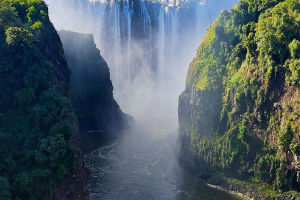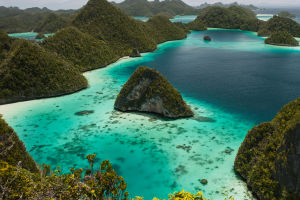Among the rolling hills and lush forests of Loire Valley, France, the Château de Chambord stands as a monumental testament to the grandeur and elegance of the Renaissance period.
Widely considered one of the most beautiful castles in France, Chambord captures the imagination with its unique architectural design, rich history, and stunning natural surroundings.
But what makes Chambord truly special? Is it the mysterious spiraling staircases, the sprawling forest that envelops the estate, or the stories of kings and artists that breathe life into the castle's walls? Let's take a closer look at the Château de Chambord and explore its architectural wonders, historical significance, and why it remains a must-visit landmark for travelers today.
A History of Power and Prestige
1. A Royal Vision: Constructed during the reign of King Francis I, the Château de Chambord was envisioned as a hunting lodge in the vast forest of the Sologne. The idea was simple: a magnificent palace where the king could enjoy the thrill of the hunt, surrounded by the serenity of nature. The construction of Chambord began in 1519 and took around 28 years to complete, though the castle was never fully finished.
2. A Royal Symbol: Chambord became a symbol of royal power and grandeur, embodying the lavishness and ambition of King Francis I. Though it was never fully inhabited as a royal residence, it hosted several important figures over the centuries, including Louis XIV and Napoleon Bonaparte.
Today, the castle remains a crown jewel of French heritage, offering visitors a glimpse into the opulent world of 16th-century royalty. Its magnificence draws thousands of visitors every year, eager to explore the grounds and learn about its rich historical legacy.
Architectural Masterpiece: A Blend of Renaissance and Medieval Styles
1. Iconic Design: The Château de Chambord is famous for its striking French Renaissance architecture, a beautiful fusion of medieval and classical styles. The roofline of the castle is adorned with elaborate turrets, chimneys, and pavilions, resembling a fairytale castle. The complex symmetry of the castle reflects the principles of Renaissance ideals, while its fortress-like design maintains the medieval traditions of protection and defense.
The central keep, a square building with four corner towers, is the focal point of the castle. The rooftop terrace offers panoramic views of the surrounding forest and the Loire River, where visitors can appreciate the intricate detailing of the castle's structure.
2. The Famous Double Helix Staircase: One of the most innovative and mysterious features of Chambord is the double-helix staircase. This architectural wonder allows two people to ascend and descend the stairs without ever meeting. It's believed that the staircase was inspired by Leonardo da Vinci's designs, and it's often hailed as a marvel of engineering from the Renaissance era. Whether you're climbing the steps or simply admiring the design, the staircase is a highlight of any visit.
Exploring the Grounds and Surroundings
1. The Grand Estate: The Château de Chambord is set within a 13,000-acre park, which is home to a rich variety of flora and fauna. The forest is a haven for wildlife, including wild boars, deer, and a variety of bird species. Visitors can take guided nature walks to explore the park, where the charm of the landscape complements the castle's majestic architecture.
The gardens surrounding the château have been beautifully restored in recent years to reflect their original Renaissance design. From the neatly trimmed hedges to the flowerbeds that line the walkways, the gardens offer a peaceful retreat for visitors to relax and admire the surroundings.
2. The Loire River and Canoeing: The Loire River, which flows just below the castle, provides opportunities for visitors to engage in a relaxing boat tour or canoeing. Gliding along the river while taking in the view of the castle's grand façade is an unforgettable experience. The riverbank also offers a picturesque setting for leisurely walks or picnics by the water.
Practical Information for Visitors
Before you set off for this historic marvel, here's everything you need to know to make the most of your visit to Château de Chambord.
1. Ticket Prices:
• Adults: €14 (Standard Entry)
• Children (under 18): Free
• Students: €10
• Guided Tours: Additional charge of €5 to €7 depending on the tour option.
Note: Special discounts are available for groups and during off-peak seasons.
2. Opening Hours:
• January to March: 9:30 AM to 5:00 PM
• April to September: 9:00 AM to 6:00 PM
• October to December: 9:30 AM to 5:00 PM
The château is closed on holiday (December 25) and New Year's Day (January 1).
3. Best Time to Visit:
The best time to visit Château de Chambord is during spring (April-May) and autumn (September-October) when the crowds are thinner, and the weather is mild. During these seasons, you can also enjoy the beauty of the surrounding gardens and forests without the summer heat.
Where to Stay and Eat
For those looking to immerse themselves in the beauty of the Loire Valley, staying near Château de Chambord offers a chance to explore the region in depth.
1. Hotels and Accommodations:
• Les Suites de Chambord: A charming boutique hotel located near the castle, offering a blend of modern luxury and historical ambiance (€150–€300 per night, depending on room type and season).
• Le Relais de Chambord: A luxurious hotel with spectacular views of the castle, located in the heart of the park. The hotel offers rooms with balconies, perfect for enjoying the serene environment (€250–€500 per night, higher-end rooms and suites can exceed €400).
• Château de Villesavin: A nearby château that offers accommodation in a more private, countryside setting (€120–€250 per night, more affordable for a château experience, with seasonal variations).
2. Dining Options:
• La Table de Chambord: Located inside the château, this restaurant offers gourmet meals made with local ingredients and seasonal produce. It's a fantastic spot to enjoy classic French cuisine while gazing at the castle. Must-Try Dishes: Potimarron Risotto (pumpkin, aged Comté cheese, hazelnuts) – €28, Free-Range Poulet de Bresse (morel mushroom cream sauce, truffle mash) – €42.
• Le Restaurant du Château: This elegant dining venue offers a range of traditional French dishes with a modern twist. Specialties include duck confit, foie gras, and locally sourced cheeses and drinks. Must-Try Dishes: Goat Cheese Tartine (local Sainte-Maure cheese, honey, walnuts, mixed greens) – €18, Seared Scallops (cauliflower purée, black truffle shavings) – €32.
• Local Cafes and Bistros: There are several cafés and bistros around the village of Chambord that serve light meals, pastries, and local specialties. Must-Try Dishes: Savory Buckwheat Galette (goat cheese, spinach, sun-dried tomatoes) – €12, Crêpe Forestière (sautéed chicken, mushrooms, crème fraîche) – €13.
Conclusion: A Journey Through Time
The Château de Chambord is not just another French castle—it's a masterpiece of Renaissance architecture, a symbol of royal ambition, and a peaceful retreat into nature. Whether you're fascinated by history, architecture, or the surrounding landscapes, Chambord invites you to embrace its timeless charm.


